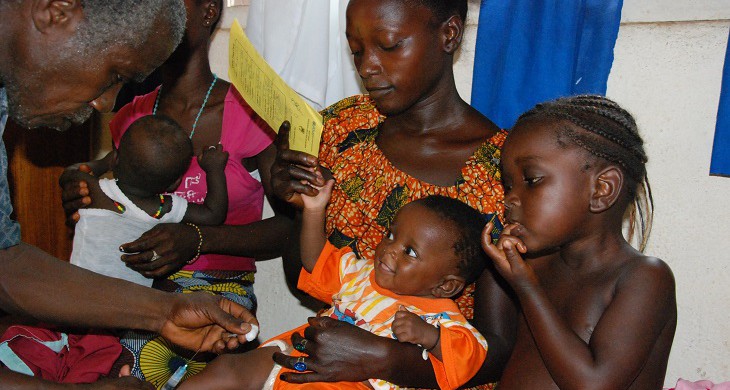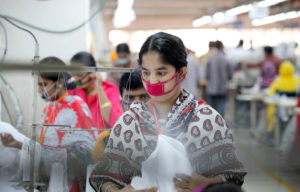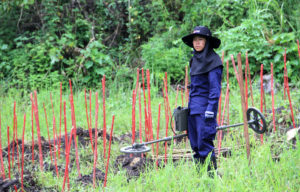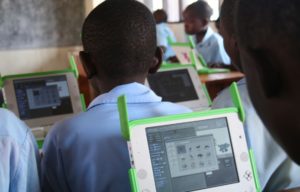
Photo: DFID
Smart syringes ensure safety
Reusing syringes can spread infection. But this should be stopped by making re-use physically impossible, says the WHO. The organisation wants to build upon a successful development in children’s vaccines and introduce smart syringes worldwide.
Share
World uses less needless syringes
1.6 billion times every year patients across the world feel the small jab of a needle. Many of the injections aren’t actually necessary, since the treatments could often be administered safer and easier as pills instead, but many patients expect to be injected because they mistakenly think it’s more effective, says Dr Edward Kelly from the WHO Service and Delivery Safety Department in a press release.
WHO has started information campaigns to bring down numbers of unnecessary injections, and this seems to be working: From 2000 to 2010, the average number of injections per person in the developing countries fell from 3.4 to 2.9.
Other categories
Injections with vaccines and medicine save many lives from disease every year. At the same time, they are themselves a big source of infection, because the syringes are often reused. In developing countries especially, the temptation to save a little money on a new syringe can be too big for some, but needles are also re-used in the West, mostly among drug addicts.
A 2014 study shows that in 2010, up to 33.877 people were infected with HIV, as many as 1.67 million people contracted Hepatitis B and up to 315.000 got Hepatitis C by reusing syringes. Now, the World Health Organization wants to do something about it. WHO has started a new initiative to introduce one-use-only syringes – after use, the plunger is stuck and breaks if one tries to refill the syringe.
To ensure maximum safety, the needles in the smart syringes are either covered by a plastic hood or retract back up into the syringe. This way, health care workers who handle many syringes are protected from accidental infections.
Lessons from children’s vaccines
The single-use syringe technology isn’t new, but has so far only been used for small, standardised syringes for vaccinating children. However, syringes used for general medicinal use are often used for many different purposes – the dose needs to be adjustable, it must be possible to dissolve powdered vaccine inside the syringe, and the doctor has to be able to move the plunger several times in order to mix different types of medicine in the syringe. All this makes it a bit harder to produce the new syringes and get them into widespread use, but WHO aims for smart syringes to be the standard by 2020.
It seems that the world listens to WHO. In 1999, the organisation urged the countries of the world to exclusively switch to one-use-only syringes for children’s vaccinations. Presently, a large majority of developing countries comply with that request. This means that the number of injections using a reused syringe has gone down by 86 percent.
According to WHO, the new smart syringes cost about 8 cents each, about double the price of the old ones. Prices are expected to fall when the new syringes become the standard solution and mass production gets in full swing.







